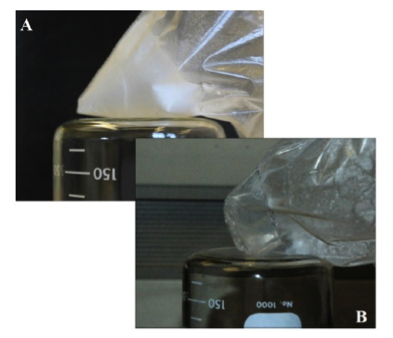2014 Annual Science Report
 VPL at University of Washington
Reporting | SEP 2013 – DEC 2014
VPL at University of Washington
Reporting | SEP 2013 – DEC 2014
Jon Toner NAI NPP Postdoc Report
Project Summary
Aqueous salt solutions are critical for understanding the potential for liquid water to form on icy worlds and the presence of liquid water in the past. Salty solutions can form potentially habitable environments by depressing the freezing point of water down to temperatures typical of Mars’ surface or the interiors of Europa or Enceladus. We are investigating such low-temperature aqueous environments by experimentally measuring the low temperature properties of salt solutions and developing thermodynamic models to predict salt precipitation sequences during either freezing or evaporation. These models, and the experimental data we are generating, are being applied to understand the conditions under which water can form, the properties of that water, and what crystalline salts indicate about environmental conditions such as pH, temperature, pressure, and salinity.
Project Progress
Supercooling in Salt Solutions: Toner and colleagues studied how much salt solutions will supercool before crystallizing either salt or ice (Toner et al., 2014a). They found that salt solutions supercool to a remarkable degree, typically ~15°C below equilibrium predictions. Perchlorate-rich (ClO4) salt solutions tend to supercool much more than analogous chlorides and sulfates. In particular, Mg(ClO4)2 and Ca(ClO4)2 solutions will supercool down to -120°C, and then transition into an amorphous glass. Such glasses are potentially important for astrobiology because glasses preserve organic molecules and structures, such that organisms preserved in glasses can remain viable upon rewarming.

Reanalysis of Phoenix Lander Data: Toner and colleagues also reanalyzed data from the Wet Chemistry Laboratory (WCL) on the Mars Phoenix Lander in order to better constrain absolute concentrations of salts in Martian soils, and uncertainties in the WCL data (Toner et al., 2014b). Improvements to original analyses included Kalman optimal smoothing and ion-pair corrections. We then took our revised analysis and modeled equilibrium freezing and evaporation of a nominal WCL solution using the geochemical model FREZCHEM and a chemical-divide model. Our model results indicate that Mg-Na-ClO4-rich solutions evolve during freezing and that a variety of primarily Mg-Na-rich sulfates, chlorides, and perchlorates form at the solution eutectic near 200 K.
Modeling Freezing and Evaporation of Perchlorate Salts on Mars: The modeling work by Toner and other on the WCL data reanalysis shows that FRZCHEM often makes predictions that are clearly in error when modeling complex salt mixtures. To develop a working multicomponent aqueous model, we parameterized a Pitzer model at 298 K using compilations of solubility data in aqueous salt mixtures (Toner et al., 2015a). The resulting model is a significant improvement over FREZCHEM. We then extended this model to <200 K using experimental solubilities in perchlorate solutions that we measured in our laboratory using a custom built cryogenic vessel (Toner et al., 2015b). To determine the full range of salt precipitates that might occur on Mars, we modeled evaporation of WCL solutions from 298 K to the eutectic at 209 K. These model results indicate that potentially habitable brines, defined as having a water activity greater than 0.6, can occur only above 219 K and 0.4 wt. % water.
Publications
-
Toner, J. D., Catling, D. C., & Light, B. (2014). Soluble salts at the Phoenix Lander site, Mars: A reanalysis of the Wet Chemistry Laboratory data. Geochimica et Cosmochimica Acta, 136, 142–168. doi:10.1016/j.gca.2014.03.030
-
Toner, J. D., Catling, D. C., & Light, B. (2014). The formation of supercooled brines, viscous liquids, and low-temperature perchlorate glasses in aqueous solutions relevant to Mars. Icarus, 233, 36–47. doi:10.1016/j.icarus.2014.01.018
-
Toner, J. D., Catling, D. C., & Light, B. (2015). Modeling salt precipitation from brines on Mars: Evaporation versus freezing origin for soil salts. Icarus, 250, 451–461. doi:10.1016/j.icarus.2014.12.013
-
PROJECT INVESTIGATORS:
-
PROJECT MEMBERS:
Jon Toner
Project Investigator
David Catling
Co-Investigator
-
RELATED OBJECTIVES:
Objective 2.1
Mars exploration.
Objective 5.2
Co-evolution of microbial communities
Objective 5.3
Biochemical adaptation to extreme environments
